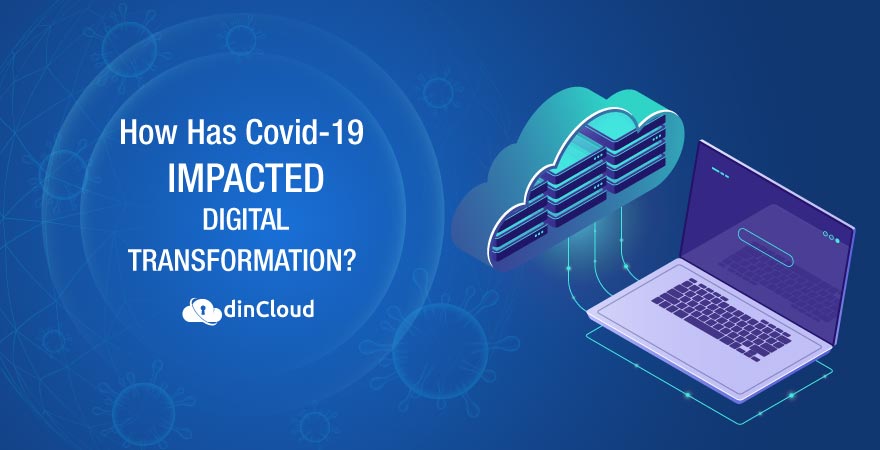The past twelve to fourteen months have been quite eventful when it comes to IT infrastructure decisions. Companies have had to re-think their entire infrastructure in a whole new light to better align with present day needs.

If we outline the single most notable trend that has defined IT related decisions, it is remote work. It won’t be wrong to say that most infrastructure planning decisions have been centered on the future capability for remote work scenarios.
Related: Going into 2021, Why Should Digital Transformation be a Top Priority?
The recently released Enterprise Cloud Index (ECI) report for 2020 has revealed interesting stats around the impact of this pandemic on digitalization initiatives. On the whole, what we can say for sure is that IT has becomes a pivotal functional area now.
How did Enterprises Cope with Covid-19?
The overall response to this pandemic has varied across industries and enterprises. Still, some of the go-to solutions during this crisis have been Cloud Computing, on premise Virtual Desktop Infrastructure (VDI), video conferencing and online collaboration tools.
Most of these solutions have been instrumental in enabling remote employees working from home (WFH) to retain their productivity levels. This in turn has enabled employees to keep the business bottom-line intact in most of the cases.
Across the globe, there were 3,400 respondents to the Nutanix Enterprise Cloud Index (ECI) 2020 survey. An overwhelming 76% of the respondents agreed that post pandemic, IT is being viewed as a more strategic functional area of the organization.
Key Spending Trends
Here is a glimpse of the spending trends in the post Covid-19 scenario:-
- 46% of respondents in the ECI survey increased their investments in hybrid cloud.
- Nearly 47% of respondents put more precious dollars in the public cloud.
- Only 37% of the ECI participants opted in favor of the private cloud.
- 34% of entities increased reliance on hybrid cloud solutions and tools, specifically in response to the pandemic.
Related: 3 Reasons to Embrace Digital Transformation
The Cloud has emerged as the most common denominator in this entire spending trend. While each enterprise has incorporated the Cloud in its own unique way, it remains a top choice due to the inherent scalability, agility and flexibility.
Automation and Digitization Take Hold
We are witnessing a two pronged strategy, which is comprised of automation and digitalization. In fact, these are more or less complementary technologies with the common expected results in the form of enhanced agility and operational flexibility.
As a result of accelerated digitalization that’s backed up by automation, enterprises are now able to access new markets, forge new partnerships and serve customers in a much more efficient as well as satisfying manner.
Related: Digital Transformation and the Future of Work
Infrastructural Lock-In – A Limiting Factor
The ECI 2020 survey highlighted one limiting factor in implementing digital transformation initiatives and that was infrastructural lock-in. Entities that had close to two decades of on-premise, legacy systems found digitalization complex and at times, even costly.
Such limitations also acted as a barrier in rare cases, where it was simply just not possible to adopt a holistic solution such as the public cloud. Still, these entities were also able to ride the digitalization tide via the Hybrid Cloud.
Priority Outlook
The ECI survey 2020 also shed light on the top IT priorities when responding to the pandemic. Here are the results:-
- 50% of the respondents declared digital transformation as their top most IT priority.
- Agility was declared a top IT priority by 41% of the respondents.
36% were focused on improving the digital or remote employee experience.
Conclusion
The survey clearly underscores the value and importance of Cloud Computing solutions such as Hosted Virtual Desktops, Servers and Databases. These solutions make enterprises more agile and flexible, at a fraction of the cost incurred over on-premise systems.
If you are also transforming digitally or planning the leap, feel free to Contact Us for detailed insights on how dinCloud’s solutions fit into the picture.


